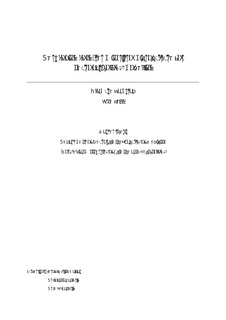Developing long-term in vitro microculture for neuropathology modelling
Master thesis
Permanent lenke
http://hdl.handle.net/11250/2437129Utgivelsesdato
2016Metadata
Vis full innførselSamlinger
Sammendrag
Background: The regenerative capacity of the adult mammalian central nervous system is limited, while neuronal responses to injury, including axonal and synaptic plasticity are highly complex and evolve in a spatiotemporal manner. In animal models, the study of regeneration is costly ethically and materially. On the other hand, the study of regeneration in vitro is challenging due to poor longterm survival and lack of physiological complexity. Microfluidic platforms allow for highly controlled in vitro environments, and partial recapitulation of elemental characteristics of in vivo architecture. The development of such a platform is detailed herein.
Aim: To develop protocols enabling survival, establishment of modular neural networks and analysis of long-term neuronal co-culture on a microfluidic platform.
Results: A series of optimised protocols pertaining to cell loading, fluorescence staining, feeding, and contamination prevention were developed. In particular, cell loading and On-Chip fluorescence required substantial effort. Successful survival of neural culture up to 32 days was achieved.
Discussion: The key factors for longevity were found to pertain to initial seeding density, with ionic balance and contamination playing lesser roles than initially suspected. Furthermore, the issues of staining and cell loading protocols are examined, and improvements are detailed. Additionally, future uses and recommendations for long-term culture are given, and improvements to the microenvironment are laid out. In particular, the benefits of microelectrode integration are elaborated.
Conclusion: These protocols allow for long-term survival of neurons in culture, and enable study of neuropathologies and regeneration with minimal material cost compared to animal experimentation and conventional culture.
